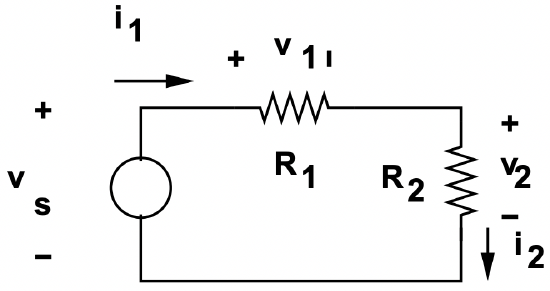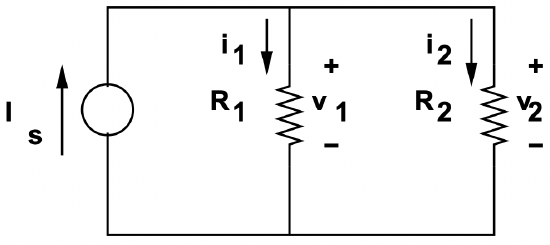1.2: Examples- Voltage and Current Dividers
- Page ID
- 55507
Figure 6 may be used as an example to show how we use all of this. See that it has one loop and three nodes. Around the loop, KVL is:
\(\ V_{s}-v_{1}-v_{2}=0\)
At the upper right- hand node, we have, by KCL:
\(\ i_{1}-i_{2}=0\)
The constitutive relations imposed by the resistances are:
\(\ \begin{array}{l}
v_{1}=R_{1} i_{1} \\
v_{2}=R_{2} i_{2}
\end{array}\)
Combining these, we find that:
\(\ V_{s}=\left(R_{1}+R_{2}\right) i_{1}\)
We may solve for the voltage across, say, R2, to obtain the so-called voltage divider relationship:
\(\ v_{2}=V_{s} \frac{R_{2}}{R_{1}+R_{2}}\label{4}\)
 Figure 6: Voltage Divider
Figure 6: Voltage DividerA second example is illustrated by Figure 7. Here, KCL at the top node yields:
\(\ I_{s}-i_{1}-i_{2}=0\)
And KVL, written around the loop that has the two resistances, is:
\(\ R_{1} i_{1}-R_{2} i_{2}=0\)
Combining these together, we have the current divider relationship:
\[\ i_{2}=I_{s} \frac{R_{1}}{R_{1}+R_{2}}\label{5} \]
Once we have derived the voltage and current divider relationships, we can use them as part of our “intellectual toolkit”, because they will always be true.
 Figure 7: Current Divider
Figure 7: Current Divider

